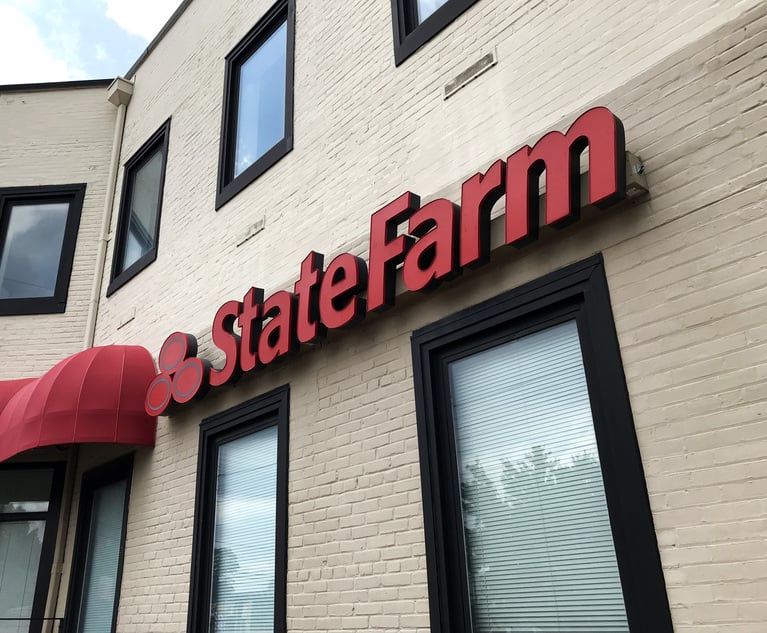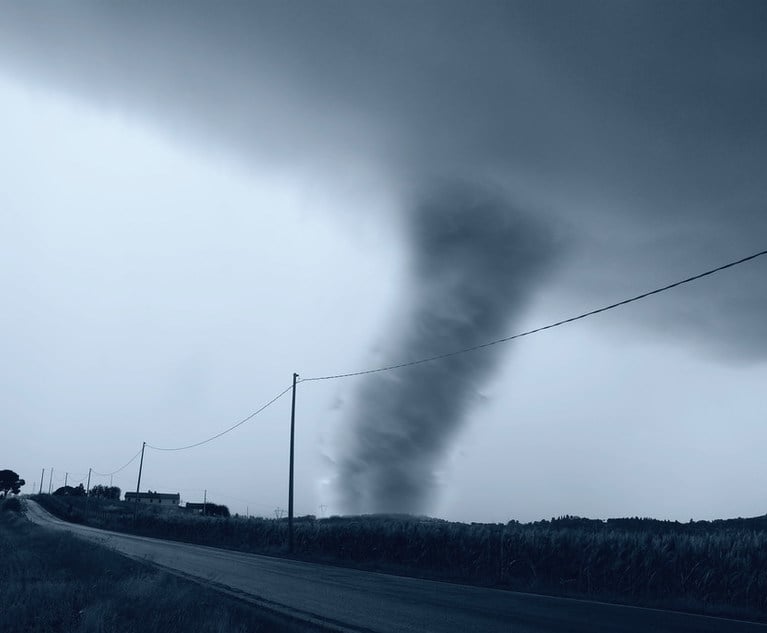Many people don’t realize that they may face serious wildfiredanger. But if your clients live in the foothills, grasslands ormountains of states like Arizona, California, Colorado, New Mexico,Utah, or Wyoming, they are at risk.
|According to the Colorado State Forest Service (CSFS), forhomeowners living in areas at high risk for wildfires, there arenumber of pre-fire activities that will decrease the likelihood ofproperty damage and loss. How a house is designed, where it isbuilt, materials used in its construction and landscape, and accessto the home all influence survivability during wildfire.
|Also, the CSFS offers some guidelines for homeowners aboutwhat specific actions to take when a wildfire is an immediatethreat.
|1. Construction
|Homeowners should build their home with fire-resistant buildingmateirals and away from ridge tops, canyons and areas betweenhigh points on a ridge. It is also recommended that a home in afire-prone area be built at least 30 feet from the propertyline.
|The underside of balconies and above-ground decks should beenclosed with fire-resistant materials. Install only dual-paned ortriple-paned windows and limit the size and number of windowsthat face large areas of vegetaion.
|[Related: The 11 rules every homeowner needs to follow whencreating a home inventory]
|Consider sprinkler systems within the house. They may protectthe home while owners are away or prevent a house fire fromspreading into the wildlands.
|Homeowners should make sure that electric service lines, fuseboxes and circuit breaker panels are installed and maintained asprescribed by code. Remind your clients that they should alwayscontact qualified individuals to perform electrical maintenance andrepairs.
||
(Photo: Shutterstock)
|2. Roofing
|Roofing is one of the most important ways to protect a structurefrom wildfire. A home with a nonflammable roof (compositionshingles, tile, metal, etc.) is many times more likely to survive awildfire than those with flammable roofs (wood shakes or shingles).Homeowners should install a roof that meets the fire resistanceclassification of "Class C” or better. Local jurisdictions mayrequire a higher fire resistance rating. Homeowners should checkcounty regulations or contact the local fire department.
|Also, for additional safety, be sure to encourage homeowner tofollow these recommendations:
- Remove dead branches hanging over a roof
- Remove any branches within 15 feet of a chimney
- Clean all dead leaves and needles from roof and gutters
- Cover the chimney outlet and stovepipe with a nonflammablescreen of one-half inch or smaller mesh
For more information on appropriate roofing materials and otherfire-resistant building design and materials, refer to theColorado State ForestService publication, FireWise Construction: Site Design & BuildingMaterials (PDF).
||
(Photo: Shutterstock)
|3. Defensible space
|In the 1980s, the term "defensible space" was coined to describevegetation management practices aimed at reducing wildfire threatsto homes. Defensible space is the area between a house and anoncoming wildfire where the vegetation has been modified to reducethe wildfire threat and to provide an opportunity for firefightersto effectively defend the house.
|The vegetation adjacent to homes can have considerable influenceupon the survivability of the house. In the event of awildfire, firefighters will likely select homes they can mostsafely and effectively protect. Even with adequate resources, somewildfires may be so intense that there may be little firefighterscan do to prevent a house from burning.
|The key is to reduce fire intensity as wildfire nears the house.This can be accomplished by reducing the amount of flammablevegetation surrounding a home. Consequently, the most importantperson in protecting a house from wildfire is not a firefighter,but the property owner. The action taken by the owner before thewildfire occurs (such as proper landscaping) is the mostcritical.
|For the most part, creating a defensible space employs routinegardening and landscape maintenance practices such as pruning,mowing, weeding, plant removal, appropriate plant selection, andirrigation. Defensible space size is not the same foreveryone, but varies by slope and type of wildland vegetationgrowing near the house.
||
(Photo: mikeledray / Shutterstock.com)
|4. Access
|When a wildfire threatens, the first few minutes are the mostcritical for saving a home. Firefighting personnel must be able toimmediately locate and safely travel to the property. At thesame time that fire engines and other emergency equipment aretrying to drive into an area, homeowners must be able to escape ina vehicle with their family and valuable personal possessions.
|Each of these steps will give firefighters a chance to find andprotect a home:
- Make sure that your street is named or numbered, and a sign isvisibly posted at each street intersection.
- Post your house address at the beginning of your driveway, oron the house if it is easilty visible fom the road
- Identify at least two exit routes from your neighborhood
- Construct driveways to allow large emergency equipment to reachyour house
- Make sure dead-end roads and long driveways have turnaroundareas wide enough for emergency vehicles. Construct turnouts alongone-way roads
- Clear flammable vegetation at least 10 feet from roads and fivefeet from driveways
- Cut back overhanging tree branches above roads

(Photo: Shutterstock)
|5. What to do when wildfire approaches
|When a wildfire is immediately threatening an area, there arecertain steps that gives residents and their home a better chanceof surviving. Recommend the following actions to your clients:
- If you see a fire approaching your home, report it immediatelyby dialing 9-1-1
- Stay on the phone to answer additional questions the emergencydispatcher may ask
- Dress properly to prevent burns and lifelong scars. Wear longpants, cotton or wool longsleeve shirts or jackets. Gloves and adamp cloth provide added protection. Do not wear short sleeveshirts or clothing made of synthetic fabrics
Prepare to evacuate
- Park your car in the garage, facing out with windowsclosed and keys in the ignition.
- Close the garage door but leave it unlocked.
- Disconnect the automatic garage door opener in case ofpower failure.
- Place valuable documents, family mementos and pets insidethe car in the garage ready for quick departure.
|
What to do outside the house
- Move combustible yard furniture away from the house or store itin the garage (if it catches fire while outside, the added heatcould ignite your house).
- Cover windows, attic openings, eave vents and sub-floor ventswith fire-resistive material such as 1/2-inch or thicker plywood.This will eliminate the possibility of sparks blowing into hiddenareas within the house.
- Close window shutters if they are fire resistive.
- Attach garden hoses to spigots and place them so they can reachany area of your house.
- Fill trash cans and buckets with water and place them wherefirefighters can find them.
- If you have an emergency generator or a portablegasoline-powered pump that will supply water from a swimming pool,pond, well or tank, clearly mark its location and make sure it isready to operate.
- Place a ladder against the house on the side opposite theapproaching fire to help firefighters in rapidly getting onto yourroof.
What do inside the house
- Close all windows and doors to prevent sparks from blowinginside.
- Close all doors inside the house to slow down fire spread fromroom to room.
- Turn on a light in each room of your house, on the porch and inthe yard. This will make the house more visible in heavy smoke ordarkness.
- Shut off liquefied petroleum gas (LPG) or natural gasvalves.
- Move furniture away from windows and sliding glass doors tokeep it from igniting from the heat of fire radiating throughwindows.
- Remove your curtains and drapes. If you have metal blinds orspecial fire resistant window coverings, close them to block heatradiation.
|
Evacuating
- If you do evacuate, travel away from the approaching firefront.
- Keep a flashlight and portable radio with you at alltimes.
- If you are trapped by fire while evacuating in your car, parkin an area clear of vegetation, close all vehicle windows andvents, cover yourself with a blanket or jacket and lie on thefloor.
- If you are trapped by fire while evacuating on foot, select anarea clear of vegetation along a road, or lie in the road ditch.Cover any exposed skin with a jacket or blanket. Avoid canyons thatcan concentrate and channel fire.
If you are in the home when a fireapproaches
- Stay inside your house, away from outside walls.
- Close all doors, but leave them unlocked.
- Keep your entire family together and remain calm.Remember: if it gets hot in the house, it is many timeshotter and more dangerous outside.
After the fire passes
- After a fire passes, check inside the attic for hidden burningembers.
- Check the roof immediately, extinguishing all sparks andembers. If you must climb onto the roof, use caution, especially ifit is wet.
- Check inside the attic for hidden burning embers.
- Check your yard for burning woodpiles, trees, fence posts orother materials.
- Keep the doors and windows closed.
- Continue rechecking your home and yard for burning embers forat least 12 hours.
Want to continue reading?
Become a Free PropertyCasualty360 Digital Reader
Your access to unlimited PropertyCasualty360 content isn’t changing.
Once you are an ALM digital member, you’ll receive:
- All PropertyCasualty360.com news coverage, best practices, and in-depth analysis.
- Educational webcasts, resources from industry leaders, and informative newsletters.
- Other award-winning websites including BenefitsPRO.com and ThinkAdvisor.com.
Already have an account? Sign In
© 2024 ALM Global, LLC, All Rights Reserved. Request academic re-use from www.copyright.com. All other uses, submit a request to [email protected]. For more information visit Asset & Logo Licensing.








